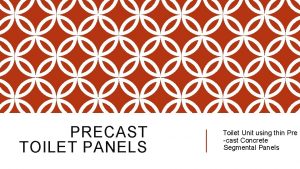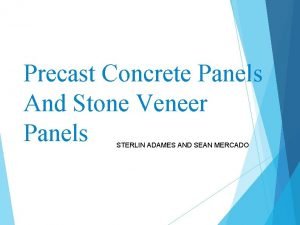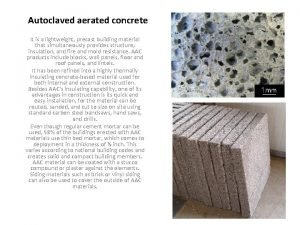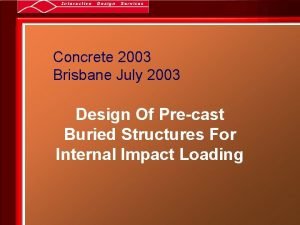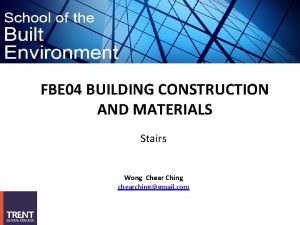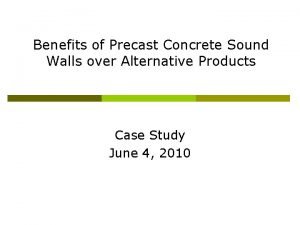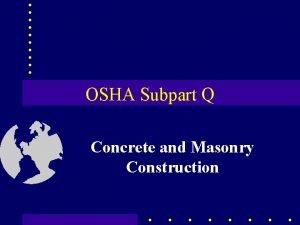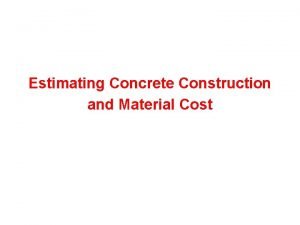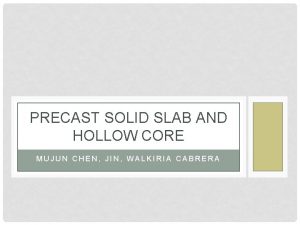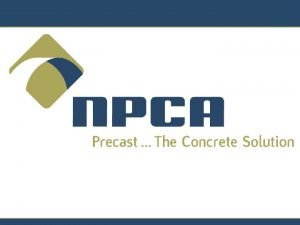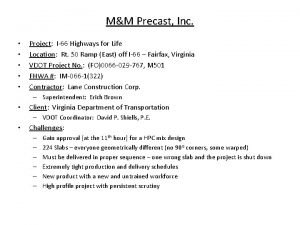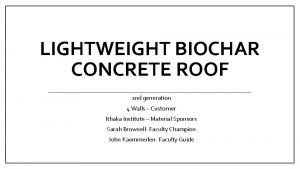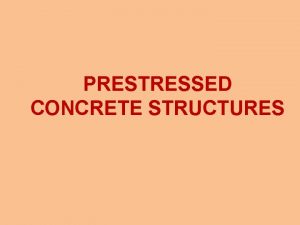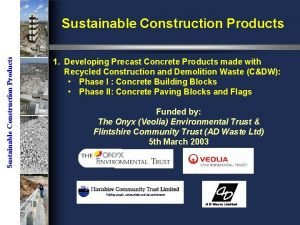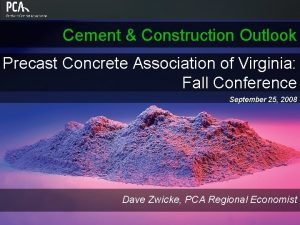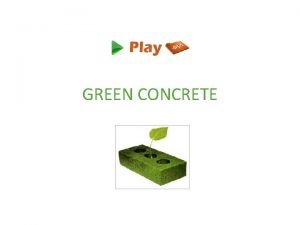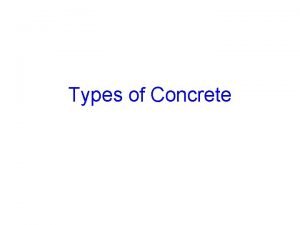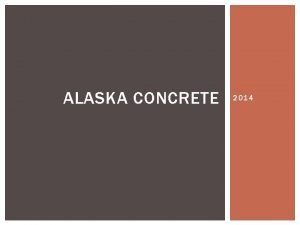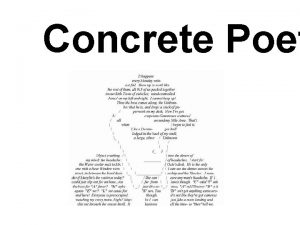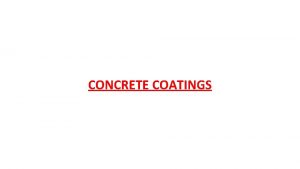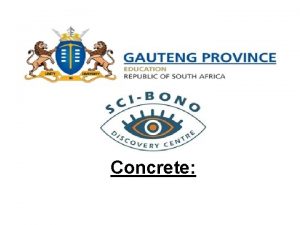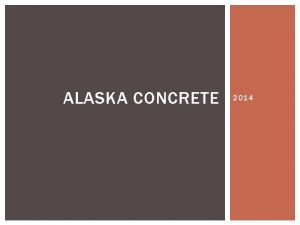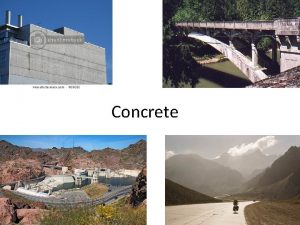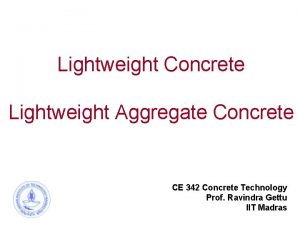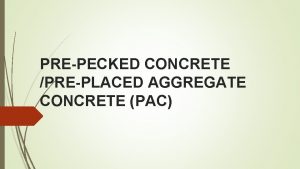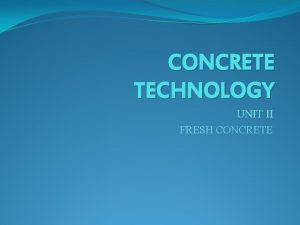PRECAST CONCRETE STRUCTURES What is Precast Concrete Construction
















- Slides: 16

PRE-CAST CONCRETE STRUCTURES

What is Precast Concrete Construction? • Precast concrete is concrete cast elsewhere than its final position. Precast construction can be used to produce a wide variety of structural elements such as wall panels, bridge girders, pipes, poles, piles etc. The concrete can be reinforced, lightly prestressed or prestressed depending upon its requirements. Precast concrete elements are typically transported from the plant to the job site through highways, rail, etc.

Reinforced concrete: • Concrete is strong in compression weak in tension. • Steel is strong in tension • Reinforced concrete uses concrete to resist compression and to hold bars in position and uses steel to resist tension. • Tensile strength of concrete is neglected (i. e. zero )

Pre-stressed Concrete • What is Pre-stressed Concrete? : – – Internal stresses are induced to counteract external stresses. In 1904, Freyssinet attempted to introduce permanent acting forces in conc. to resist elastic forces under loads and was named “Pre stressing”.

Comparison of Plain & Prestressed concrete beams


Principle of pre-stressing: • Pre-stressing is a method in which compression force is applied to the reinforced concrete section. • The effect of pre stressing is to reduce the tensile stress in the section to the point till the tensile stress is below the cracking stress. Thus the concrete does not crack. • It is then possible to treat concrete as an elastic material. • The concrete can be visualized to have two compressive force i. Internal pre-stressing force. ii. External forces (d. l , l. l etc ) • These two forces must counteract each other.

Pre-stressed Concrete: Methods • There are two basic methods of applying pre-stress to a concrete member – Pre-tensioning – most often used in factory situations – Post-tensioning – site use – In general, post-tensioning is used if the unit is over 45 ft long or over 7 tons in weight.

Types of pre-stressing: I. Pre-tensioning In Pre-tension, the tendons are tensioned against some abutments before the concrete is place. After the concrete hardened, the tension force is released. The tendon tries to shrink back to the initial length but the concrete resists it through the bond between them, thus, compression force is induced in concrete. Pretension is usually done with precast members


II. Post tensioning • In Post tension, the tendons are tensioned after the concrete has hardened. Commonly, metal or plastic ducts are placed inside the concrete before casting. After the concrete hardened and had enough strength, the tendon was placed inside the duct, stressed, and anchored against concrete. Grout may be injected into the duct later. This can be done either as precast or cast-in-place.

Post tensioning

Advantages: • Take full advantages of high strength concrete and high strength steel • Need less materials • No cracks • Use the entire section to resist the load • Better corrosion resistance • Good for water tanks and nuclear plant • Very effective for deflection control • Better shear resistance

Disadvantages compared to RC: • • Need higher quality materials More complex technically More expensive Harder to re-cycle

Application: • Bridges • Slabs in buildings • Water Tank • Concrete Pile • Thin Shell Structures • Offshore Platform • Nuclear Power Plant • Repair and Rehabilitations • joists

 Precast concrete toilet structures
Precast concrete toilet structures Concrete veneer panels
Concrete veneer panels Precast concrete utility vaults
Precast concrete utility vaults Precast aerated concrete
Precast aerated concrete Precast concrete brisbane
Precast concrete brisbane Precast concrete dog leg staircases
Precast concrete dog leg staircases Benefit of
Benefit of A limited access zone must
A limited access zone must Homologous structures example
Homologous structures example Construction material weights
Construction material weights Informal inventory
Informal inventory Concrete semi concrete abstract
Concrete semi concrete abstract Hollow core slab vs solid slab
Hollow core slab vs solid slab Precast
Precast M&m precast
M&m precast Rock solid precast
Rock solid precast Precast roof nd
Precast roof nd
